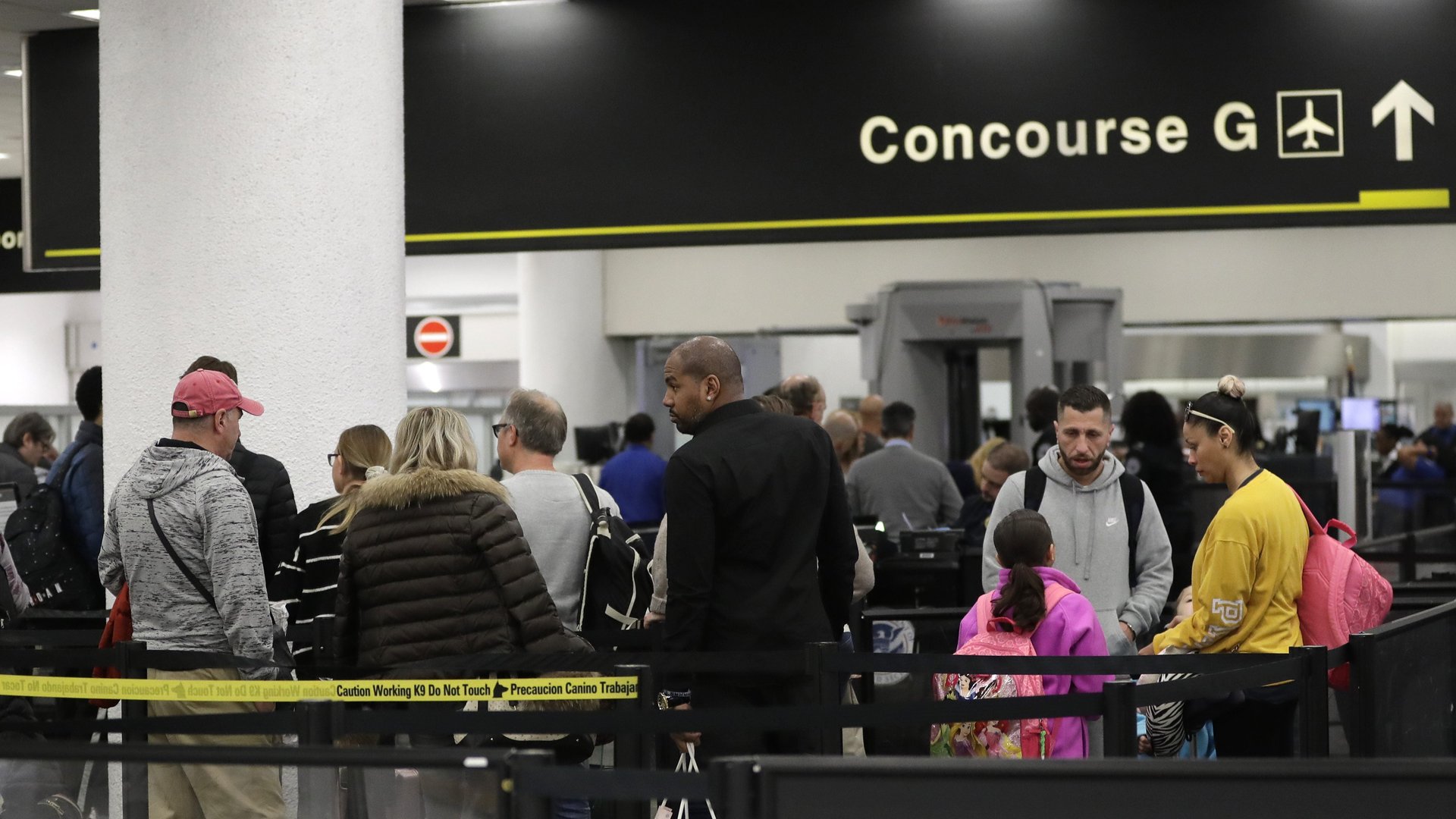Cuban spies reportedly infiltrated a US airport
Cuba’s intelligence services have managed to infiltrate at least one US airport, obtaining highly sensitive information from sources apparently working on the inside. That’s according to copies of classified Cuban government documents published by Spanish-language news site CiberCuba. (Quartz reviewed both the Spanish documents and the English-language translation provided by the outlet.)


Cuba’s intelligence services have managed to infiltrate at least one US airport, obtaining highly sensitive information from sources apparently working on the inside. That’s according to copies of classified Cuban government documents published by Spanish-language news site CiberCuba. (Quartz reviewed both the Spanish documents and the English-language translation provided by the outlet.)
The revelation–upon which one aviation official is casting doubt–reveals the continuing efforts of the Communist nation’s espionage program. CiberCuba is operated from Spain by Cuban exiles.
All of the documents are written on Cuban Ministry of the Interior (MININT) letterhead, from the “Dirección de Contrainteligencia.” One of them, dated January 2017, includes detailed information it claims grants access to restricted areas of Miami International Airport (MIA) in South Florida.
“Here are 2 MIA security PINs,” says the memo, which is attributed to an agent identified only as “Charles.” “Through the other information channel, digital reading of credentials, same order. Access to secure areas. Miami International Airport. Blue, Green, main Green, Brown secondary zone. Brown main zone, Green secondary zone, Yellow Identification,” it continues.
“Mérito al Gordo,” it concludes, crediting someone nicknamed “the Fat Man” for the information.
Another document includes a copy of an aircraft mechanic’s official ID card, issued by the US Department of Transportation (DOT) and the Federal Aviation Administration (FAA). It contains a note at the bottom to forward the image to MININT’s Department of Information and Communication Technology “for analysis and study of the holographic seal.”
A third details several attachments to a document (or set of documents), including, apparently, diagrams and schematics of the Boeing 767-200’s hydraulic systems and fuel tanks, as well as aircraft logs used for maintenance.
“None of these documents can be found published,” says a note at the bottom of the document, which is dated November 2016.
As for the codes, former MIA director Emilio González told CiberCuba that the idea of the Cuban government having “people inside the facility with this level of access is truly disturbing.”
As for the ID card, González, now Miami’s city manager, said “reproducing it allows for the creation of falsified documents and identifications.”
As for the Boeing data, attorney Sergio Comas, an expert on Cuban affairs, told CiberCuba, “Accessing specialized technological information allows you to reduce the costs of maintenance and repair, and overcome possible commercial obstacles.” Because while Havana’s industrial espionage capabilities are formidable, the perpetually cash-strapped island always needs to find new ways of making do.
In a statement cited by the Miami Herald, Miami-Dade County aviation director Lester Sola said the airport’s security has not been compromised, based on his review of the leaked documents, which he said contained multiple errors and inconsistencies. For example, Sola said the colors used by the airport to denote secure areas did not match the ones described in the CiberCuba documents.
A global network of moles
Enrique García Diaz, an ex-Cuban spy who now lives in the United States, told CiberCuba that MIA is of interest to Cuban spymasters “because it is a crucial hub for transporting people and goods. All of the information surrounding MIA, as insignificant as it may seem, is of interest to Cuba; from access to databases to tracking people as soon as they disembark from an airplane.”
In an interview with Quartz, García, who was a career clandestine operative with Cuba’s General Directorate of Intelligence (DGI, for its acronym in Spanish), said he recruited sources from all corners of society. This included politicians and other high-ranking government officials, academics, and members of the clergy.
The Cuban intelligence services maintain thousands of sources throughout the United States, including large contingents of operatives posing as diplomats at Cuba’s UN mission in New York City and its embassy in Washington, DC, said García, who defected to the US in 1989 from Quito, Ecuador, where he had a cover job as a foreign trade representative named “Walter Diaz.”
Before García defected, he says the DGI had recruited a US senator and maintained what one colleague referred to as “our spy nest in the US Congress.” No one has ever been caught, as far as García knows.
Wherever the Cuban intelligence services work, the ultimate target of their activities is always the United States, he said. And while a legislator (or airport employee) is always helpful, García said, “It can sometimes be more effective to put a cleaner at the US embassy on the Cuban payroll than to have the president working for you.”